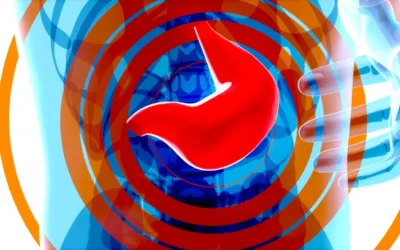Understanding the role and potential conditions of abdominal and pelvic lymph nodes is crucial for diagnosing and managing various diseases. These nodes are integral to the lymphatic system, influencing immune responses, disease progression, and overall health.
Table of Contents
Introduction: Why Abdomen and Pelvis Lymph Nodes Matter
The human body’s immune system is a complex network designed to protect against infections, diseases, and other foreign invaders. At the heart of this system lie lymph nodes—small, bean-shaped organs that filter lymphatic fluid, trapping harmful substances. In the abdomen and pelvis, these lymph nodes play a pivotal role in maintaining the body’s defenses, especially in organs like the intestines, bladder, and reproductive system. Abnormalities in these lymph nodes, such as enlargement or dysfunction, can signal underlying medical conditions ranging from infections to life-threatening cancers. Thus, a deeper understanding of the abdominal and pelvic lymph nodes, their functions, and potential health issues is vital for effective diagnosis and management of numerous diseases.
Anatomy and Function of Abdomen and Pelvis Lymph Nodes
The lymphatic system is a vast network that includes lymph nodes, vessels, and lymph fluid. The abdominal and pelvic lymph nodes are spread throughout these regions and are essential for immune surveillance and defense. These nodes help filter harmful substances like bacteria, viruses, and cancer cells from the lymphatic fluid before it re-enters the bloodstream. Key groups of lymph nodes in this region include:
- Iliac Lymph Nodes: These are located along the iliac arteries and are responsible for draining lymph from the pelvic organs, lower abdominal wall, and legs.
- Para-aortic Lymph Nodes: Found near the aorta, these nodes drain lymph from the abdominal organs such as the kidneys, stomach, intestines, and reproductive organs.
- Mesenteric Lymph Nodes: Situated in the mesentery (a fold of the intestines), these nodes are crucial for immune surveillance of the gastrointestinal tract, particularly the small and large intestines.
Without the proper functioning of these nodes, the body’s ability to filter and remove harmful substances is compromised, potentially leading to infections or unchecked cancer growth.
Common Conditions Involving Abdomen and Pelvis Lymph Nodes
Several medical conditions can affect the abdominal and pelvic lymph nodes, leading to a range of symptoms and health issues. Below are some of the most prevalent conditions associated with these lymph nodes:
- Lymphadenopathy: Lymphadenopathy refers to the abnormal enlargement of lymph nodes, often caused by infections, autoimmune diseases, or cancers. In the abdomen and pelvis, lymphadenopathy can cause symptoms such as abdominal pain, bloating, and a feeling of fullness. For example, viral infections like mononucleosis or bacterial infections like tuberculosis can trigger lymphadenopathy in these regions.
- Lymphoma: Lymphoma is a type of cancer that originates in the lymphatic system. Both Hodgkin’s and non-Hodgkin’s lymphoma can involve abdominal and pelvic lymph nodes, causing significant enlargement of the nodes. Symptoms often include unexplained weight loss, night sweats, fatigue, and swollen lymph nodes that can be detected via imaging. Early detection of lymphoma is crucial for effective treatment, which may include chemotherapy, radiation, or immunotherapy.
- Metastatic Cancer: One of the most serious conditions affecting lymph nodes in this region is metastatic cancer. Cancer cells from primary tumors, such as those in the lungs, breasts, or prostate, can spread to the abdominal and pelvic lymph nodes. Once these nodes become involved, it indicates that the cancer has entered an advanced stage. Imaging studies and biopsies are essential for diagnosing metastatic cancer and guiding treatment, which may involve surgery, chemotherapy, and targeted therapies.
Diagnostic Approaches for Abdominal and Pelvic Lymph Node Issues
Early and accurate diagnosis of conditions affecting the abdominal and pelvic lymph nodes is essential for effective treatment. The diagnostic process typically involves several steps:
- Clinical Evaluation: Physicians begin by taking a detailed medical history and performing a physical examination. Signs of lymph node enlargement, tenderness, or swelling may lead to further investigation.
- Imaging Techniques: Non-invasive imaging methods are often the next step in diagnosing lymph node issues. Ultrasound is frequently used as a first-line imaging technique to evaluate lymph node size and structure. For more detailed information, CT (Computed Tomography) scans or MRIs (Magnetic Resonance Imaging) are employed to identify the extent of lymph node involvement and any potential spread of disease.
- Biopsy and Histopathology: In cases where cancer is suspected, a biopsy may be performed to collect tissue samples from the affected lymph nodes. This sample is then analyzed under a microscope (histopathology) to confirm the presence of malignancy and its type. A biopsy can also help rule out benign conditions such as infections or inflammatory diseases.
Treatment and Management of Lymph Node Conditions
The management of conditions affecting the abdominal and pelvic lymph nodes depends on the underlying cause. Here are the main treatment options:
- Medical Management: If lymphadenopathy is due to infections, antibiotics or antiviral medications may be prescribed. For autoimmune causes, corticosteroids or other immune-modulating drugs may be required.
- Cancer Treatment: When conditions like lymphoma or metastatic cancer are diagnosed, treatment typically involves a combination of chemotherapy, radiation, and sometimes surgery. In certain cases, new treatments such as immunotherapy or targeted therapy may be used, depending on the specific type of cancer and its genetic profile.
- Surgical Interventions: In cases where the lymph nodes are obstructing other structures or where cancerous nodes need to be removed, surgery may be necessary. Lymph node dissection, a procedure to remove the affected nodes, is often performed in conjunction with other treatments like radiation or chemotherapy.
- Monitoring and Follow-up: Ongoing surveillance is key, especially for patients diagnosed with malignancies. Regular imaging studies and follow-up exams ensure that any recurrence or progression of disease is caught early, improving the likelihood of successful treatment.
Practical Tips for Lymph Node Health
While not all lymph node conditions are preventable, there are several practical steps that individuals can take to maintain a healthy immune system and minimize risks:
- Maintain a Healthy Diet: Eating a diet rich in fruits, vegetables, and lean proteins helps support the immune system and reduces the risk of infections and cancers.
- Stay Physically Active: Regular exercise helps improve lymphatic circulation, supporting the body’s ability to filter and remove harmful substances.
- Seek Early Medical Attention: If you experience symptoms such as unexplained swelling, pain, or weight loss, consult a healthcare professional for evaluation, especially if the symptoms persist.
- Avoid Exposure to Carcinogens: Reducing exposure to tobacco, alcohol, and environmental toxins can lower the risk of developing cancers that can spread to the lymph nodes.
Conclusion
Abdominal and pelvic lymph nodes play a critical role in maintaining the body’s immune function and defending against diseases. From benign infections to life-threatening cancers, the conditions affecting these lymph nodes require timely diagnosis and appropriate management. By understanding their role and being proactive about health, individuals can improve their outcomes and maintain a strong, healthy immune system. Whether through regular check-ups, a healthy lifestyle, or awareness of symptoms, it’s crucial to stay vigilant and consult medical professionals for any concerns related to lymph nodes.
References
- Lymphoma Research Foundation. (2023). Understanding Lymphoma. Retrieved from https://lymphoma.org/aboutlymphoma/
- American Cancer Society. (2024). Lymph Nodes and Cancer. Retrieved from https://www.cancer.org/cancer/cancer-basics/lymph-nodes-and-cancer.html
- National Cancer Institute. (2023). Lymph System. Retrieved from https://www.cancer.gov/publications/dictionaries/cancer-terms/def/lymph-system
- Mayo Clinic. (2024). Swollen lymph nodes. Retrieved from https://www.mayoclinic.org/diseases-conditions/swollen-lymph-nodes/symptoms-causes/syc-20353902
- Armitage, J. O., Gascoyne, R. D., Lunning, M. A., & Cavalli, F. (2017). Non-Hodgkin lymphoma. The Lancet, 390(10091), 298-310.
- Willard-Mack, C. L. (2006). Normal structure, function, and histology of lymph nodes. Toxicologic Pathology, 34(5), 409-424.
- Tanis, P. J., Nieweg, O. E., Valdés Olmos, R. A., & Kroon, B. B. (2002). Anatomy and physiology of lymphatic drainage of the breast from the perspective of sentinel node biopsy. Journal of the American College of Surgeons, 195(4), 547-555.
- Swartz, M. A. (2001). The physiology of the lymphatic system. Advanced Drug Delivery Reviews, 50(1-2), 3-20.
- Choi, J. Y., Lee, K. S., & Kwon, O. J. (2005). Characterization of tuberculosis-associated lymphadenopathy with CT and MR imaging. American Journal of Roentgenology, 185(1), 135-142.
- Grégoire, V., Levendag, P., Ang, K. K., Bernier, J., Braaksma, M., Budach, V., … & Lengele, B. (2003). CT-based delineation of lymph node levels and related CTVs in the node-negative neck: DAHANCA, EORTC, GORTEC, NCIC, RTOG consensus guidelines. Radiotherapy and Oncology, 69(3), 227-236.





0 Comments